Between 2014 and 2016, brewery numbers in South Africa almost doubled (from 86 to 154). Two years on, the growth has slowed and today we have around 225 microbreweries and contract brewers, some of which are rarely, if ever, heard from.
In the past 12 months or so, we have seen the launch of 18 new breweries/brands, though only a handful since the start of 2018. There have also been closures. In 2017, Krugerbrau, based in Sasolburg, closed down and sold their equipment. Harfield Brewery closed last year; Roca Microbrewery (at Dieu Donne in Franschhoek) seems to have finally been put out of its misery; Long Mountain ceased to operate when their brewer took a job at Boet Beer in Robertson; and Scavenger Brewery, west of Durban, sold this year after only opening in 2017. Saddest of all, the popular Cockpit Brewhouse, in Cullinan closed its doors this year (more on that later).
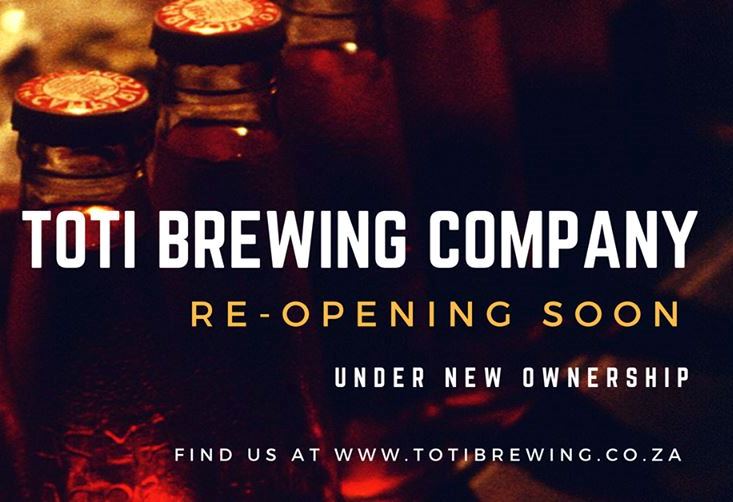 In fact there are movements all over the place. Chameleon, Red Sky, Owl & Hare, Flagship and Malt ‘n’ Metal (now called Big Buddies BBQ & Brewery) were all sold in 2017, but continued to trade in the same place, mostly with the same beers (and in the case of Red Sky, even the same brewer). Toti Brewing Company in KZN has a banner on their FB page that says they’re soon opening under new management. A few others never officially closed, but seem to have just slipped away: remember VonB, Bardwell, Freshly, Gijima, Rebellion, Savage, Oakes Brewhouse and more? They all appear to have ceased trading, with no internet activity for many months. And of course there’s perhaps the biggest shocker of them all: Mitchell’s. For those that haven’t heard, the country’s oldest microbrewery has closed their Knysna brewery, with the equipment advertised for sale. Operations have moved to Devil’s Peak in Cape Town, though there are plans to open a brewpub in the brewery’s hometown of 30+ years.
In fact there are movements all over the place. Chameleon, Red Sky, Owl & Hare, Flagship and Malt ‘n’ Metal (now called Big Buddies BBQ & Brewery) were all sold in 2017, but continued to trade in the same place, mostly with the same beers (and in the case of Red Sky, even the same brewer). Toti Brewing Company in KZN has a banner on their FB page that says they’re soon opening under new management. A few others never officially closed, but seem to have just slipped away: remember VonB, Bardwell, Freshly, Gijima, Rebellion, Savage, Oakes Brewhouse and more? They all appear to have ceased trading, with no internet activity for many months. And of course there’s perhaps the biggest shocker of them all: Mitchell’s. For those that haven’t heard, the country’s oldest microbrewery has closed their Knysna brewery, with the equipment advertised for sale. Operations have moved to Devil’s Peak in Cape Town, though there are plans to open a brewpub in the brewery’s hometown of 30+ years.
For sale
And there’s more. As you read this, there are several breweries up for sale. Robertson Brewery in George is looking for a buyer, as is Stickman in Cape Town, and earlier this month Garagista announced their sale in true Garagista style, with a memorable campaign. For Sale Ale comes with the tagline “Like the beer? Buy the brewery.” I’ve heard further rumours about Long Beach (Cape Town) potentially looking for a buyer, although the new owners only took over in early 2017. And it’s not just the beer industry that seems to be struggling – earlier this year Windermere Cider also announced that they’re closing down the brand and selling all of their equipment due to stagnation of the business.
So what’s going wrong? There has long been talk of oversaturation of the market, but while we have an ever-increasing amount of breweries, many of them aren’t producing a great deal of beer. Greg Casey, owner of Banana Jam Cafe and Afro Caribbean Brewing Company, thinks that there is still space for new breweries in South Africa, but that people need to rethink their business plan. “I don’t think the industry is oversaturated,” he says, “but brewers need to think about how to dispense their beer. For example in Cape Town everyone comes to Banana Jam or to Beerhouse, but those aren’t necessarily places that they can move large volumes, because there is lots of competition from the other taps. It’s better to identify a niche market, such as a hotel, where you’re the only craft beer available. I think there’s a lack of imagination when it comes to selling the beer.”
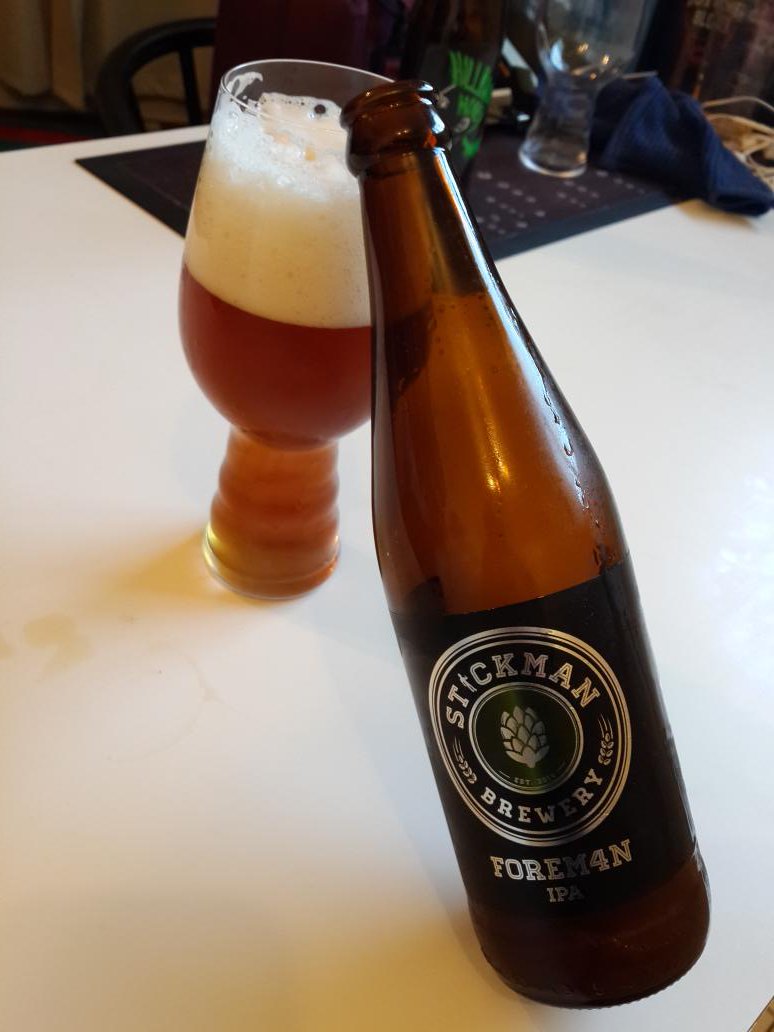
Stickman made a great IPA, but good beer alone isn’t enough.
Photo courtesy of Matthew Hurst (@BeerClubSA)
It’s not just the lack of outlets to sell the beer that’s an issue, says Johan Burger of Stickman Brewery. “I first thought of selling about 18 months ago but then things picked up,” he says. “Since the start of the year though, the market is very tough. I think the economy plays a big role. Craft beer is a premium product and those luxuries are the first to go when the purse strings are tight.” And as craft beer gets ever-more expensive, people might be even less inclined to keep buying it. As you probably know, I’m a huge craft beer fan and am unlikely to switch to macro lager any time soon, but I am looking at some of the prices lately and opting for a less expensive beer, even if it’s not always my first choice.
The Brewpub Model
There have also been other changes in the industry. The so-called “Big Five” (CBC, Darling, Devil’s Peak, Jack Black and Red Rock) can produce volumes that a smaller brewer can’t even dream of and with those volumes come prices that smaller brewers cannot compete with. And nor should they, says Greg. “There is money in beer, but not in the current model most people are operating. If you’re going to open a brewery, you need a brewpub.” Brewpubs can be tricky due to the licencing requirements – the site needs to be zoned as industrial in order to get a brewing licence and not every industrial park is an attractive prospect for Saturday afternoon drinks. But this doesn’t mean it’s impossible – it just takes a lot of effort to find the right premises and to make them work. Mad Giant, Devil’s Peak, Jack Black and Impi have all recently opened in areas that other brewers might have scoffed at, and all are doing well. (It is worth noting here that some of the major craft breweries are running at a capacity o around 40-60%. Times are pretty dire.)
Steve Miller of Garagista echoes the opinion that distribution is not the way forward in the SA industry at the moment. “We’ve had to rethink our business model from a distribution brewery to a destination brewery,” he says. “This has been hastened by the issues surrounding water supply, transport cost, margin squeezes, et al.” But Steve doesn’t believe there are any long-term issues with the local craft beer industry. “It’s just going through a period of maturity and adjustment. The primary reason I’m selling – and only hopefully a majority share, not the whole shebang – is because other business interests are taking precedence and too much of my time. I’m only in the brewery about two days a month and I think it deserves more time, attention and love.”
Consistency, quality and passion
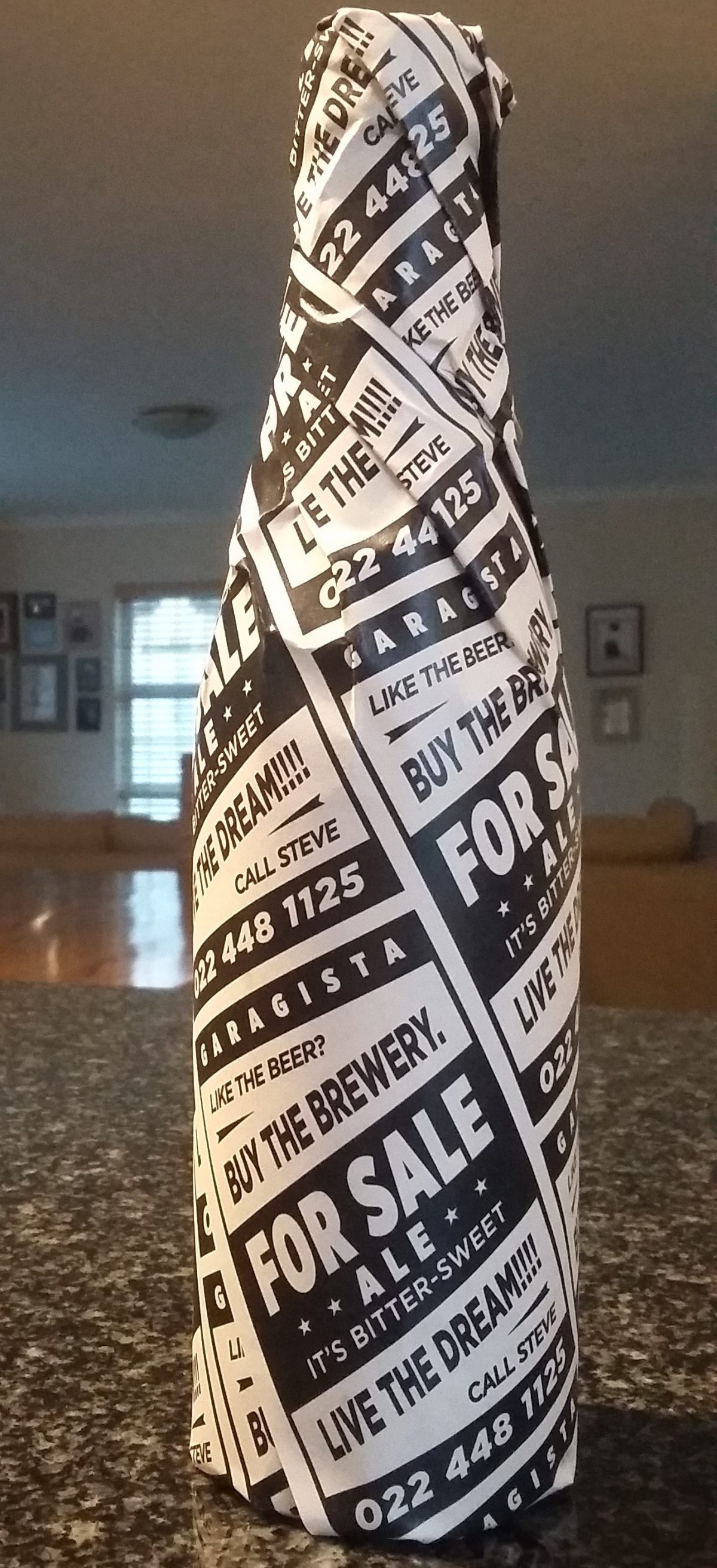
Want to buy a brewery?
I believe that we will see further closures over the next year or two, particularly from breweries that failed to identify their target market and of course those that fail to produce high quality, consistent beer. A few years ago, you could get away with a sub-par product because craft beer was new and shiny – people didn’t know what it was meant to taste like so they supported brewers whose beers weren’t up to scratch. But the consumer is getting more aware of what good beer should taste like and shunning shoddy brews accordingly.
Of course, to survive, you need more than just good beer. You need good marketing, you need a competent, innovative brewer, you need someone with a head for business and accounts. You need a clearly defined target market and a plan of how to get your beers to that market. You need a decent chunk of capital behind you and you need to realise that unless you have hefty investors (and a stable product with a solid shelf life), that you should not be distributing nationally or trying to compete with the major players in the craft beer scene. And of course, you need passion. Making money from selling beer is hard work and if you don’t love what you’re doing, if you don’t enjoy telling festival-goers about your beers, if you don’t drink, breathe and sleep beer, then you’re probably not going to last long.
This market is about to change again, with the probable arrival of some of Heineken’s American craft acquisitions and the likely arrival of AB InBev brands like Leffe and Hoegaarden. If you’re just about to break into the game, you’re not going to make it with a 1000-litre brewhouse and no tap room, but if you can find a spot where customers can and will come to you, I really think there is still plenty of space for you at the party.
CORRECTION: When this post was first published I erroneously said that Apollo had stopped production. They are now contract brewed at Drifter and supply select venues with beer on tap.

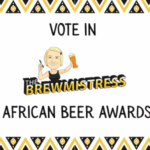


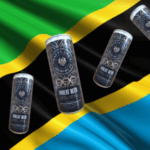

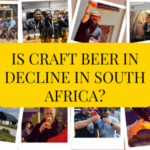
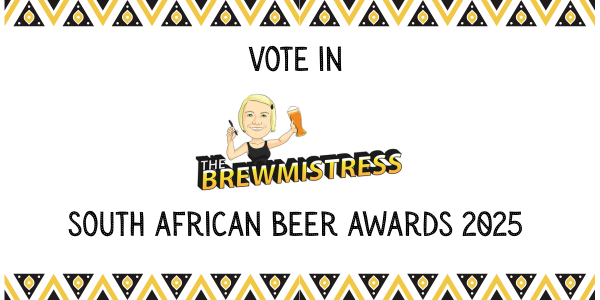

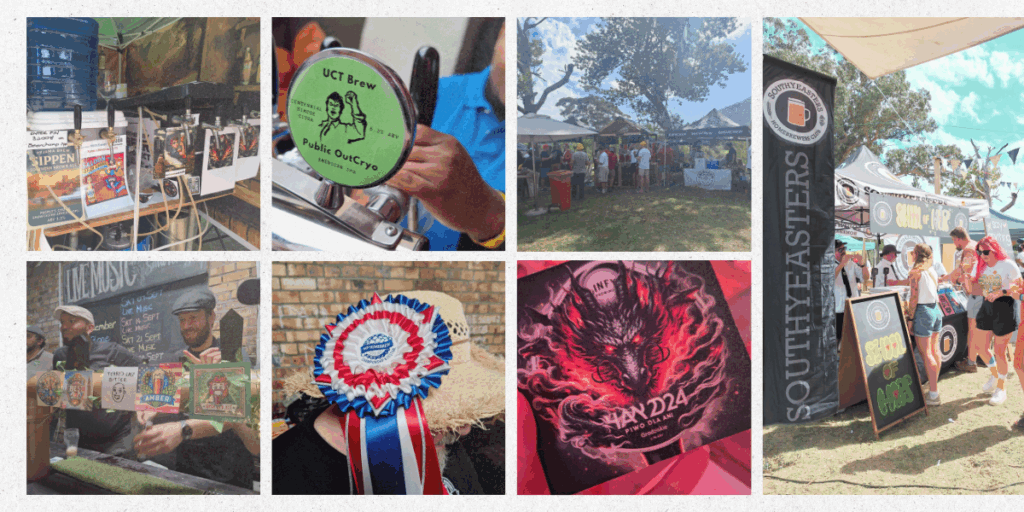
I’ve always thought that distribution is chasing a wild goose; that is, as far as craft is concerned. In agriculture there’s a definite (if still small) move towards adding value to produce and distributing directly from farms. Maybe that’s a metaphor that could be adopted. But what really troubles me is the proposed liquor legislation, and the effect that this would have on brewpubs.
Great read, thank you.
Agreed on the quality aspect – At this stage, cannot even state your beer is of ” Great quality ” because its a case of so what? Quality is expected as a standard. Non-negotiable
And so it should be! When you pay more for something, you shouldn’t accept a lower quality just because it’s “craft”. It should be better than the R15 Castle that you could have bought.
I don’t fully understand the rationale. I always thought brewpubs are another outlet, a way to show customers your brewery etc. But surely an average brewpub/restaurant cannot carry the capital cost of the brewery in the back room? I don’t know the margins of a restaurant / brewpub, but does it not mostly only just about carry itself? (if successful). It’s like wine tasting on a wine farm – it’s nice and almost a “necessary evil” but surely the bulk income does not come from there.
Hey Leon. There is of course a lot to running a brewpub – and some fail when it comes to restaurant management – but think about the profit margin. If you are distributing, you’re lucky to sell a bottle of beer for more than R15. If you sell that 330ml in your tap room, you have no distributor’s fee, no cut from the bottle store or bar owner. You can sell it for R25/30 (and no bottle, cap or label to pay for). Now of course the overheads are greater, particularly when it comes to staff, but there are some people who are proving that this model can really work. Look at Aegir Project – they barely bottle these days but the taproom is always pumping. Soul Barrel in the Winelands don’t bottle or distribute at all. Honingklip, Clarens, Emerald Vale and Triggerfish also operate the brewpub model, with limited bottles available in other outlets. Eric from Triggerfish has always had a brewpub mentality – “if you want my beer, you need to come to me” and it really works!
Hi Lucy, Apollo is alive and well. We’ve never stopped production, only shifted operations to Drifter where it’s now brewed under contract for us. We’ve had tap space at Beerhouse on Long for 4 years now without a break in supply. We no longer bottle our beer, but only supply a select few places with kegs.
My apologies Chris. As you know, I have now removed this and printed a correction.
A few years back I would not leave a bottle store without a few craft beers for the braai, or we were only going to restaurants/pubs that had craft beer. Not so much these days, why would I keep spending that amount of money on the same thing over and over when for years before the craft scene got so big mostly everyone was happy supporting the big guys by buying the same thing over and over for half the price. Nowdays I only buy something that is limited release or new, and only one or two. So for me the main issue the price, not sure who is to blame here, but I got a feeling it is the middleman who is trying to get rich while screwing over the brewery…
Some issues with the standard distribution model:
– Cold chain: who really gives a damn about your beer?
– Middleman markups: places like BeerHouse selling your beer at a 200% + markup?
– Competition for shelf space
– Competition in general
Brewpub plus points:
– You know who handles and stores your beer
– small batches are possible and indeed EXPECTED
– all the profit in your pocket
– you determine the selling price
– nobody else sells beer on your premises
Challenges:
– are you a venue?
– is your beer REALLY good enough for people to come and find you?
– what is your real differentiating characteristic?
General observations:
– customer has become educated
– lots of competition
– we’re seeing overseas players entering the local market
– we’re in a recession
Bottom line:
– QUALITY
– VALUE FOR MONEY
– EXCLUSIVITY
I tried to make a comment earlier, but looks like there was technical issue.
My take on this, based on conversations I had with a few people mentioned in this blog (when they started their breweries), is they didn’t do the maths properly. I am not sure how they got it so wrong, perhaps just not understanding the processes required to produce and maintain quality and therefore not understanding the costs of them.
I did a feasibility analysis a while back. It doesn’t take a rocket scientist to work out the margins are very fine and making a profit in brewing is not easy.
Have to echo one of the comments above. Monthly I bought my usual beer and would stock up on craft ..usually CBC or Darling and some of the newer ones. But the prices have just gone beyond ridiculous. For the price of a pack of craft I could instead get some of the best imported German and Belgian mainstream beer……I don’t bother with craft anymore….must be 2 years since I last bought any….craft beer became money making and all logic around pricing has gone out the window…..